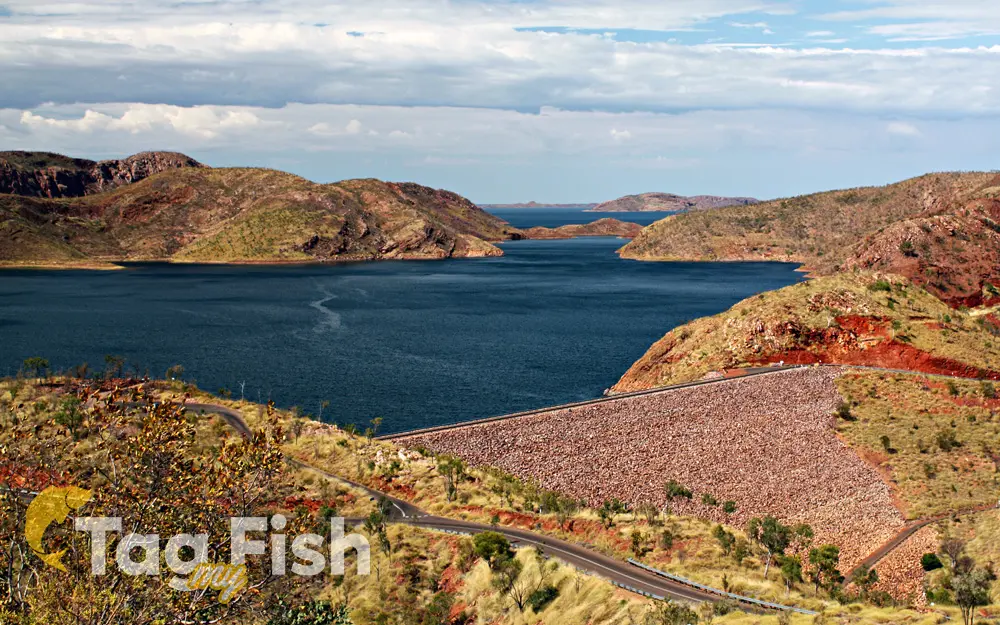Lake Argyle

General data
- Name: Lake Argyle
- Water system: Indian ocean
- Water type: Artificial lake
- Progression: Ord River -> Cambridge Gulf -> Joseph Bonaparte Gulf -> Timor sea -> Indian ocean -> Planet Earth
- Climates: Subtropical, Arid (desert)
- Continents: Australia & Oceania
- Countries: Australia
Lake Argyle is second largest freshwater man-made reservoir by volume in Australia. The reservoir is part of the Ord River Irrigation Scheme and is located near the East Kimberley town of Kununurra. The lake flooded large parts of the Shire of Wyndham-East Kimberley on the Kimberley Plateau about 80 kilometres (50 mi) inland from the Joseph Bonaparte Gulf, close to the border with the Northern Territory. The primary inflow is the Ord River, while the Bow River and many other smaller creeks also flow into the dam. The damming of the Ord River has caused major changes to the environment. Flows to the Ord River have been severely reduced. Within Lake Argyle itself a thriving new eco-system has developed. The lake is recognised as an important wetland area under the Ramsar Convention; with Lake Kununurra it forms the Lakes Argyle and Kununurra Ramsar Site. The lake is now home to 26 species of native fish and a population of freshwater crocodiles currently estimated at some 25,000. Fish species in Lake Argyle include barramundi, southern saratoga, archer fish, forktail cat fish, mouth almighty, long tom, bony bream, and sleepy cod.


